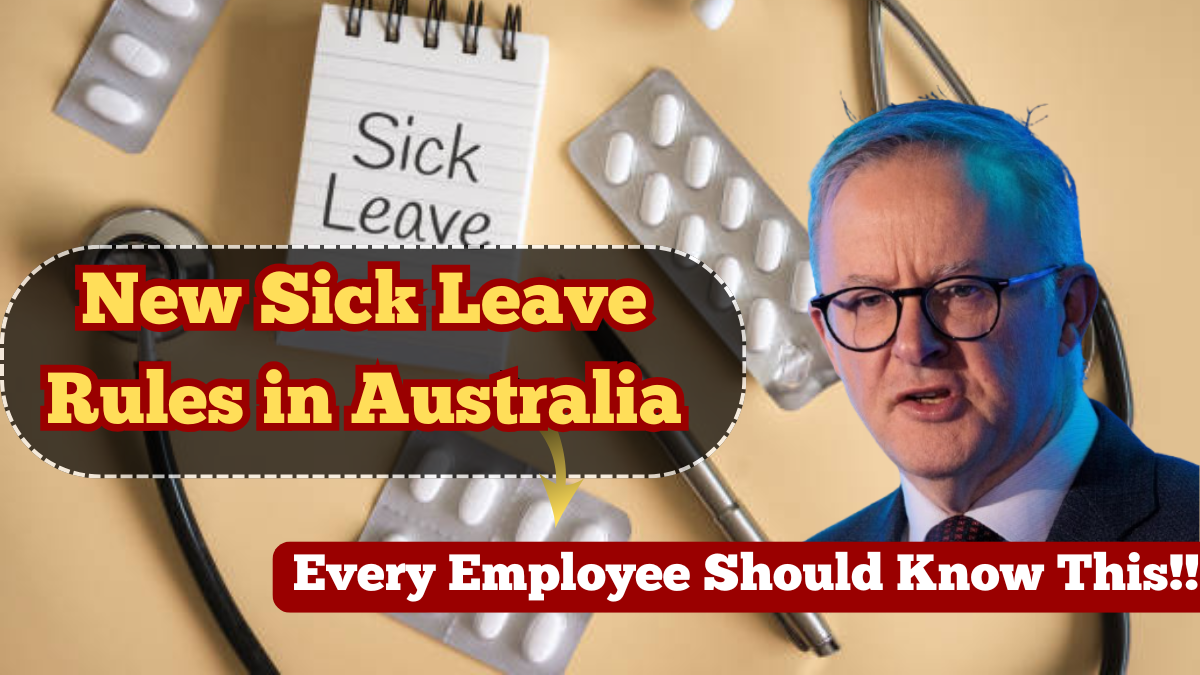In 2025, Australian workers are receiving welcome changes to their sick leave australia entitlements. The government has introduced a revised work policy that boosts both clarity and fairness in how employees can use their sick leave. These changes reflect growing concerns about worker well-being, burnout, and the need for a stronger safety net during medical leave.
The updated employee laws impact full-time, part-time, and casual workers, giving everyone a clearer path to use and access their leave. With the focus on flexibility and employee rights, this new policy reinforces the importance of health-first practices across all sectors.

What’s New in the 2025 Sick Leave Policy?
The sick leave australia update brings in several significant changes for 2025, all of which benefit the average working Australian. Under the new work policy, the following entitlements now apply:
-
10 days of paid sick leave for full-time employees (no change in quantity, but easier access)
-
Part-time employees receive leave on a pro-rata basis
-
No medical certificate required for absences up to 2 consecutive days
-
Mental health leave now falls under standard paid leave australia provisions
-
Cumulative unused sick leave remains valid from year to year
-
Employers must provide leave balance transparency on payslips
These revised employee laws ensure that workers are not penalized for short-term illness while protecting their long-term employee rights.
Who Is Covered by the New Sick Leave Rules?
The 2025 updates to sick leave australia policy apply to:
-
All employees covered under the Fair Work Act
-
Casual workers with regular and systematic shifts (may access unpaid leave)
-
Public and private sector employees
-
Remote and gig workers under new trial schemes
-
Workers experiencing short-term physical or mental health conditions
The expansion of paid leave australia to include mental health absences is one of the most celebrated aspects of the reform. It signals a shift in how Australian work policy views emotional wellness.
Why This Change Matters in the Australian Workplace
With a rise in workplace stress and absenteeism, the government saw the need to update outdated employee laws. By improving sick leave australia standards, the aim is to:
-
Promote a culture of rest and recovery
-
Reduce presenteeism (working while unwell)
-
Encourage early treatment for mental health conditions
-
Empower workers with transparent employee rights
Employers also benefit by having clearer policies, improving morale and retention under the 2025 work policy framework.
How to Access Your Sick Leave Entitlements
Accessing your paid leave australia entitlements is now easier:
-
Notify your employer before or during the sick leave period
-
No medical certificate needed for 1–2 day absences
-
For longer illnesses, provide documentation if requested
-
Check your sick leave balance on your latest payslip
-
Use leave for both physical and mental health concerns
The employee laws now mandate employers to clearly list sick leave balances, so workers can track their rights in real time.
FAQs
How many sick leave days are available under the 2025 policy?
Full-time employees are entitled to 10 days of paid sick leave under the updated sick leave australia system.
Do I need a doctor’s note for short sick leave?
No, under the new employee laws, medical certificates are not required for up to 2 consecutive sick days.
Is mental health now covered under sick leave?
Yes, the 2025 work policy includes mental health as a valid reason for paid leave australia.
Can casual workers access sick leave?
Casual workers may access unpaid sick leave if their shifts are regular and ongoing under the Fair Work employee rights clause.
Does unused sick leave carry over?
Yes, unused sick leave australia entitlements roll over annually unless stated otherwise in your workplace agreement.
Click here to know more.
